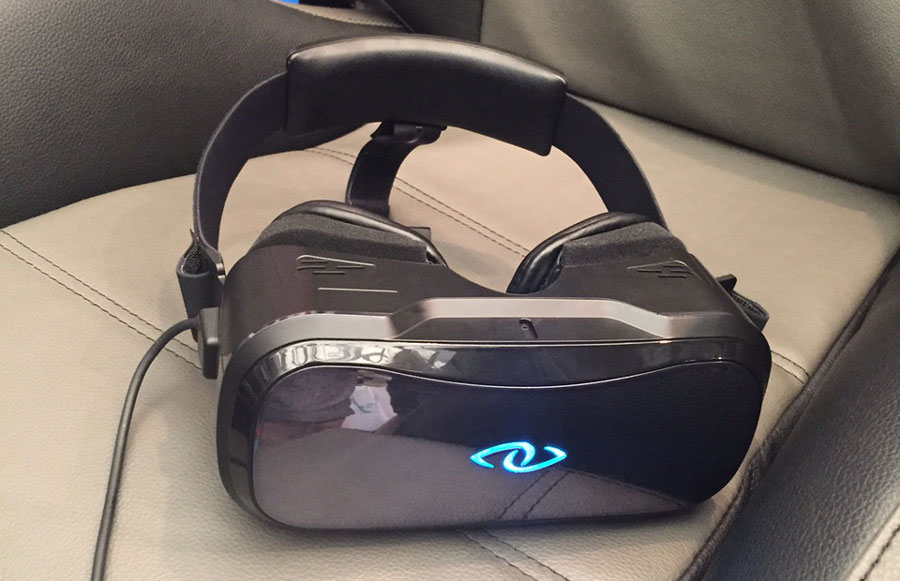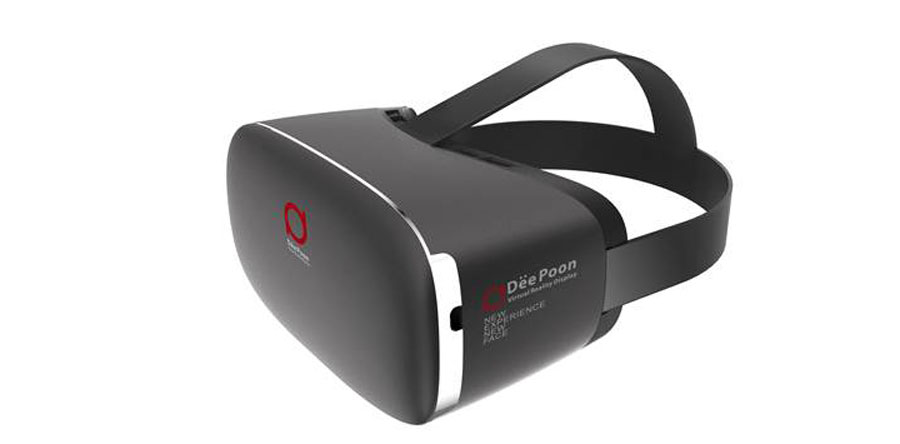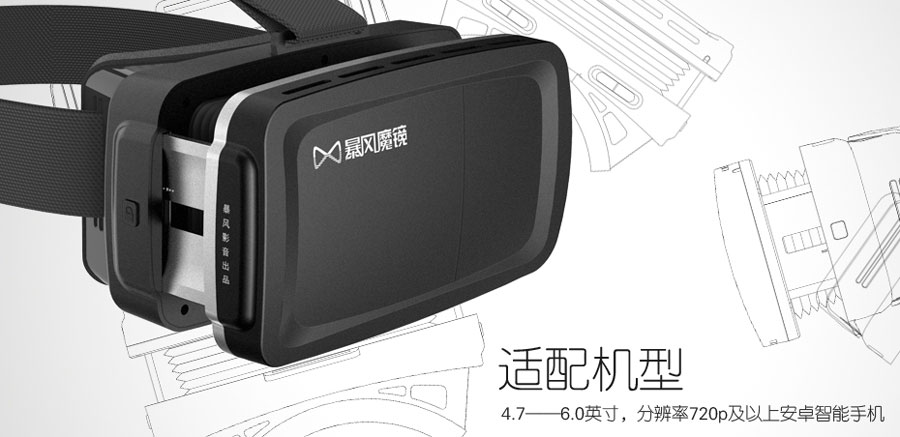‘I would like to invest in Yivian if I can get my payoff in half a year’, an investor who wants to know a bit more about virtual reality said to me.
It’s not very surprising as more and more people come to me to seek short-term investment opportunities in virtual reality market. China is a huge capital market where you can find many opportunities to make money fast.
 Oval Po Liu is the founder of Yivian.com, one of China’s leading VR news sources. Oval has been writing about the VR space in China since last October. Oval is a self-described INFJ guy who has committed himself to his dream of helping to bring VR to the masses.
Oval Po Liu is the founder of Yivian.com, one of China’s leading VR news sources. Oval has been writing about the VR space in China since last October. Oval is a self-described INFJ guy who has committed himself to his dream of helping to bring VR to the masses.
Reportedly, there are more than 100 (this number comes from Shenzhen’s hardware supplier) virtual reality HMD manufacturers in China. Shenzhen is an amazing city, where the majority of the technology that you own is manufactured, so of course it makes it an ideal location for cheap and rapid iteration.
The following is a chart of some published virtual reality industry reports.
| Source | Shipments | Market Value |
| TrendForce | 14 Million/2016 | |
| BI Intelligence | 26.5 Million/2020 | |
| ABI Research | 43 Million/2020 | |
| Piper Jaffray | 500 Million/2025 | |
| Digi-Capital | $30 Billion/2020 | |
| CCS Insight | $40 Billion/2020 | |
| MarketsandMarkets | $15.89 Billion/2020 |
From this chart it is easy to understand why so many people in China are jumping to make HMD devices. Cheap parts for low end experiences plus a big potential market make VR an easy target for Chinese manufacturers.
The Main HMD players
Many of you have already heard of the explosion of VR headsets coming out of China. Some, like ANT VR for example, have made their way to US shores but the insular Chinese market is creating contenders of their very own. Forces like China’s lax intellectual property laws (at least compared to the US) have lead to countless ‘me-too’ type products from Chinese manufacturers. That said, there are some products that rise above the rest in an attempt to capture the 1.3 billion person potential market in China.
3Glasses
3Glasses is a brand from Shenzhen Virtual Reality Technology Co. Ltd., and 3Glasses D2 is the latest product which was launched at 30 June 2015. 3Glasses has received much concern since last year. Jie Wang, the CEO of the company said that 3Glasses takes its name from the meaning of the third eye. Initially 3Glasses was only a project of Jingweidu Technology Co. Ltd., a company which was founded ten years ago by Jie Wang. At the end of last year however, 3Glasses separated from Jingweidu as an independent company.
The 3Glasses D2 have a touchpad on the side, weighs about 246g, and has double aspheric coated lenses. In addition, these are the technical specifications that the 3Glasses are currently touting:
- TFT-LCD screen with 2560 x 1440 resolution
- 110° FOV
- < 13ms Latency
- 60 Hz FPS
On paper it seems like a nice VR HMD, but it may disappoint you a bit if you get a chance to try it. First of all, you will notice a lack of positional tracking, immediately relegating it to a certain segment of the market. Beyond that, it did not meet my expectations when I tried it at its launch event. For example, the TFT-LCD screen, which has higher persistence effect than AMOLED screen, isn’t very clear. 3Glasses should move towards Fresnel lenses and AMOLED screen.
You may be shocked by the 13ms Latency and want to ask me how they made it. But a former 3Glasses employee said that 13ms latency is a trick when I talked with him. He said, “I think they just took 13 as an acceptable public number under the current circumstances.”
The company has announced a broad cooperation with partners to sell the 3Glasses D2 for 2,199RMB (about $345). China Telecom, the largest fixed-line service and the third largest mobile telecommunication provider in China, is one of the biggest highlights on that partner list. In a few months, the 3Glasses D2 will be on China Telecom’s outlet’s shelves all over the country. The users who bought the first iteration 3Glasses D1, which was launched on October 24 of last year, can trade in D1 for D2 freely. It seems that 3Glasses want to dominate the Chinese market with a preemptive strike.
Deepoon
Deepoon is a brand from Shanghai. The company currently has two products, one is a mobile side HMD named VIRGlass, and the other is a PC side HMD named Deepoon. Zhaoyang Chen, the CEO of the company, used to tell me that he also was not satisfied with VIRGlass which is their first product. The company doesn’t have any plans for a second iteration of VIRGlass.
The company instead has poured their efforts into Deepoon, a product that compares to Oculus Rift DK2 – minus positional tracking (editor’s note: notice a theme here?). Deepoon features Samsung’s AMOLED screen, Fresnel lenses and the compatibility with Oculus Rift DK2 content.
Deepoon’s listed technical specifications:
- AMOLED screen with 1920 x 1080 resolution
- 120° FOV
- < 19ms Latency
- 75 Hz
Due to the lack of VR content developers in China, Chen chooses to create an HMD that is compatible with Oculus content. But it means that they need to follow Oculus Rift close behind in the next few years, and wait for Oculus Rift’s iterations and SDKs every time. Anyway, it’s the best PC HMD option instead of DK2 at present.
While 3Glasses has mass production already lined up, the 1,799RMB (about $282) Deepoon is restricted by the limited production of Samsung’s AMOLED screen so that will limit its ability to penetrate the market somewhat.
So which strategy do you prefer when you need to dominate the market, quality first or market first? It’s really hard to say which is right in China, but I think it depends on the exact strategy. BaofengMojing is a good example in order to explain this.
BaofengMojing
BaofengMojing, a mobile VR HMD, has been fairly controversial within the Chinese VR community. BaofengMojing, which is currently in its third iteration, has been iterating on its product very quickly to go along with the market’s response. While BaofengMojing’s first two iteration products were poorly received by those who tried them, the third iteration has improved a lot which also takes compliments from many VR insiders and enthusiasts.
BaofengMojing applies the “market first” strategy. The following is a chart about launch date and pricing of its three iterations.
| Iteration | Launch Date | Init Price | Current Price |
| 1st | Sep. 1st 2014 | 15.95 USD | 15.95 USD |
| 2nd | Dec. 16th 2014 | 15.95 USD | 14.34 USD |
| 3rd | Jun. 4th 2015 | 15.95 USD | 10.63 USD |
As we can see from the above chart, BaofengMojing really has a fast iteration update plan and adopts a low price market strategy. BaofengMojing’s monthly report said its sales may reach 12.9 million dollars and it has already sold 230,000 units during the first 7 months of 2015. BaofengMojing has tried to please the market and capital at the same time.
BaofengMojing has a 98° FOV, and it’s certified to work with any Android smartphone with screen sizes measuring from 4.7 inches to 6.0 inches. You can put your smartphone inside and then close the faceplate. In order to look as clear as possible, you can use the top wheel to adjust focus. It is kind of like Google Cardboard dressed in Gear VR’s clothing.
BaofengMojing has also attracted attention of investors, to the tune of $10 million. The round, which was led by the Huayi Brothers, the music company Tianyin, the mobile firm Aisidi, and Green Pine Capital Partners, took a 19 percent stake valuing the company at more than $50m USD.
BaofengMojing has developed an app store for its users. In order to support its hype, BaofengMojing has invested a lot money to buy VR content, and now they have also founded an investment team to seek VR startups for investment.
As you can see the Chinese VR scene is a bit behind the US in many ways in terms of hardware, but the point remains that it is a huge market for the medium that is waiting to be tapped. Chinese companies are rushing to be first to market with products aimed at keeping that market out of the hands of non-Chinese companies like Oculus (US), HTC (Taiwan), and Sony (Japan). Just as there will be those who spend more for the top end experiences there will be those willing to shave off a bit of the quality of the product to buy a cheaper option.





























